SUMMARY
This is AI generated summarization, which may have errors. For context, always refer to the full article.
![[ANALYSIS] Grading the national government’s response to the 2nd wave of COVID-19](https://www.rappler.com/tachyon/2021/04/2nd-surge-covid.jpg)
Until recently, I was proud of the way that the national government has managed the pandemic in the Philippines. I would brag to my colleagues in the United States that we Filipinos have been able to keep our numbers of cases and deaths low relative to our total population. But now, I am frustrated, confused, and angry with the government’s mismanagement of the second surge. It is not clear to me if the government even knows what it is doing. It certainly is not being driven by the science of pandemic management. Instead, we are stumbling around in the dark while the virus continues to overwhelm our capital’s hospital system and to kill our kababayans, some of them while they were sitting in their cars, waiting for a bed to open in our drowning hospitals.
The national government keeps reminding us that the pandemic is surging around the world. This certainly is true. However, our second surge did not have to be this bad. Our second surge did not have to be this explosive. Our second surge did not have to be this out of control.
During the early weeks of March, the national government was warned by numerous stakeholders – including the mayors of the NCR – that this second surge was different. Case numbers were rising quickly. Transmissions were more frequent. The variants were changing the rules of the game. Because of this, there were calls for a circuit breaker lockdown to slow the surging virus.
The government went into denial and ignored the warning signs. No, this is not a surge. This is just a spike. No, the variants are not responsible. The public is just not complying with the minimum public health standards. No, we do not need an MECQ or an ECQ. Targeted lockdowns and the Apat Dapat are enough.
And yet, as predicted, the surge exploded. As predicted, we eventually had to enter ECQ. As predicted, our hospitals became overwhelmed. And most tragically, as predicted, Filipinos are dying in greater numbers than ever before. It did not have to be this bad.
The national government insists that our healthcare system in the NCR is not on the verge of collapse. The national government brags about the number of new COVID-19 beds that are being added on a daily basis. But the numbers do not add up.
According to the data from the DOH, hospital occupancy in the NCR has remained steady at around 7,500 hospitalized patients since April 1, 2021. How can it be steady when around 4,500 new cases of COVID-19 are being reported every day in the NCR? How can this be? The only plausible answer, confirmed by reports on both mainstream and social media, is that our hospitals have stopped admitting new patients. They are full. They are overwhelmed. And because of this, Filipinos are dying because they cannot get the care that they need from their hospitals. By definition, this is what a healthcare system on the verge of collapse looks like.
The national government insists that there are 9,000+ COVID-19 beds in the NCR. Why are many still empty? We are in the middle of the worst surge of the pandemic. They should be full. Is it because we do not have the nurses and the other healthcare workers to take care of the patients in those beds? I think so.
The national government insists that it has increased bed capacity in the NCR since the beginning of the ECQ on March 29, 2021. For example, it brags about adding 900+ new COVID-19 beds at the National Center for Mental Health (NCMH) in Mandaluyong.
Again, the DOH data says otherwise. The so-called “new” 900+ beds at the NCMH have long been counted in the total COVID-19 bed capacity in the NCR. I have been keeping an eye on them since the beginning of March. They just have been unoccupied for the past many weeks, probably because they were being reserved for COVID-19 positive patients with mental illness.
For the record, according to DOH data, on March 28, 2021, there were 8,949 designated COVID-19 beds in the NCR. On April 13, 2021, again according to DOH data, there are 9,652 designated COVID-19 beds. This is a difference of 703 beds or 50 new beds added per day during the ECQ. During that same time period, there were on average 4,500 new cases of COVID-19 every day in the capital. Since 11% of patients are hospitalized in the NCR on average, this is 450 new hospital patients every day during the ECQ. In effect, the number of new patients needing hospitalization has been nine times the number of new beds added every day. No wonder our hospitals and medical frontliners are on the verge of collapse!
The national government has been touting the number of daily PCR tests recently. They proudly announce that the Philippines ranks third after India and China in terms of tests per million. This number is meaningless during a surge. Right now, our positivity rate is hovering at 20%. One in five Filipinos tested is infected with COVID-19! And this is definitely an underestimate! Since the WHO recommends that the positivity rate should be below 5%, this means that our testing capacity should be four times what it is now! This means that the government’s high number and claim to fame of 63,839 tests performed on April 8, 2021, should be at 250,000+ per day. This is not something that I am proud of. We can do much better for the Filipino people.
Moving now to contact tracing. I have been working with the local government of Quezon City on pandemic management for the past six months. At one point at the end of last year, the contact tracers of QC were able to trace 30+ contacts per every positive case. This was impressive. However, the city’s contact tracing capacity crashed when the DILG could not continue paying for the national government-sponsored contact tracers at the beginning of this year because it had exhausted the funding from Bayanihan 2.
Not surprisingly, therefore, as Mayor Benjamin Magalong has reported, the contact tracers for Quezon City struggled in March, as everyone else did, with the explosive numbers of new cases during the second surge. It was impossible to trace the many contacts of 1,000+ new cases per day, which was the daily number of cases recorded by the city not so long ago.
As the experience of South Korea reveals, the challenge is that contact tracing only works when the daily case numbers are low. Once a surge builds and the virus gains momentum, contact tracing cannot contain the pandemic. Therefore, it is not enough to increase the number of contact tracers – though the DILG is adding 25,000+ to the ranks of contact tracers in the “NCR Plus” bubble next month – the national government must also decrease the daily case load so that the contact tracers can do their job efficiently. If the national government does not drop these numbers, our new contact tracers will be crippled from the get-go.
Which brings me to the last item on this report card for the national government: lockdown. The national government returned the NCR along with some of the neighboring provinces to an ECQ on March 29, 2021. This return to lockdown in the “NCR Plus” bubble was triggered by explosive numbers of new daily cases. At that time, the government declared that it was expecting the number of daily cases to drop “more than 25%” after a week. I had no idea where that number came from! It certainly was not supported by the science. But I was hopeful, especially after I discovered that some countries in Europe were able to decrease their caseload by 15% with stay-at-home orders.
But two weeks plus after the beginning of the ECQ, the caseload has remained stubbornly high. Yes, the surge has slowed, but it has not yet peaked. It will only peak when the reproduction number reaches R=1.0. We are not there yet.
There are several possible reasons for the stubborn numbers that we are experiencing. First, despite the drop in mobility in the NCR to around 80% below baseline – comparable to last year’s ECQ – this lockdown has been unstable. Mobility increased significantly during the second week of the ECQ, up 15% or so on some days according to the Apple mobility data. I think that this can be attributed to three things.
First, the distribution of ayuda last week forced millions of people to come out of the safety of their homes and crowd together for hours waiting in line. Second, the vaccination centers too have been plagued with large crowds and long queues. I have already heard of my relatives who caught the virus while standing in line, either while waiting for ayuda or while waiting for a vaccine. This portends of a resurgent virus next week because of superspreader events! Next, the high population density of the NCR makes lockdowns less efficient. Crowding facilitates viral transmission. Finally, there are anecdotal stories of very crowded public buses. Once again, this would easily lead to superspreading events. But the result is the same: high daily case numbers that are not dropping quickly.
What is so confusing and frustrating for me, however, is the government’s decision to ease the ECQ despite these stubbornly high numbers of daily cases. What were the reasons for this decision? If an ECQ is slower than expected at driving the numbers down, then why move to an MECQ which will be even slower than the ECQ? Is the government addicted to the high daily numbers of new cases that we read about at 4 every afternoon?
As I explained above, the high daily numbers is driving the collapse of both our healthcare system and our contact tracing capacity. We need to drastically drive the daily cases down to give our frontliners and our contact tracers space and time to breathe. We have to flatten the curve. This will only happen when the reproduction number, R, is below 1.0 for many weeks. And yet, despite the high numbers, the national government decided to move the “NCR Plus” bubble to an MECQ. In effect, it allowed more people to leave their homes. In effect, it decided to feed the already struggling virus with new victims so that it would not starve. I will not be surprised if we see a resurgent virus in the next two weeks. The surge will surge again.
But we have been told that we should not worry. We have been reassured that we will see the effects of the ECQ in another two weeks. Furthermore, we have been informed that modeling by the national government tells us that a week or two more of MECQ will bring this surge under control. Is this the same modeling that predicted the 25% plus drop in cases after one week of the ECQ? If so, this model is a crystal ball that is in immediate and drastic need of repair and replacement.
What we do know for sure is that lockdowns are the only effective way to dramatically decrease the explosive numbers of new cases during a surge of COVID-19. These lockdowns work. However, they have to be allowed to work. They have to be in place long enough for the reproduction number to drop below 1.0 for many, many weeks. Otherwise there will be no respite for our medical frontliners and our contact tracers.
There is a reason why the United Kingdom has been in hard lockdown for four months. Despite its earlier shortcomings, the British government realized its mistake in delaying lockdown early and maintained the lockdown long enough to flatten the curve. Unfortunately, it appears that the national government of the Philippines is not learning the same lesson.
But what about the poor who are starving? Again and again, I have heard that we cannot extend the necessary lockdowns because of the poor. Yes, remembering the poor is critically important. They are beloved of the Lord. However, I have been told by several Filipino economists that the government has been stingy. Compared to many other countries, including our neighbors in ASEAN, our national government’s fiscal response has been abysmal. Our government can afford the ayuda. It just has to decide that this is a priority. Like many other countries around the world, we need to pay our people to stay home. And we should be willing to borrow from international sources to do this. Otherwise, we will not be able to squash this surge. The quickest way to heal our economy is to end the pandemic as soon as possible.
I am a professor who has graded thousands of students during my career. Recently, I heard that the national government has been grading the LGUs for their COVID-19 performance. I have heard that many of the LGUs of the NCR have not done well. According to these reports, their mayors have failed. But this has not been my personal experience. I have found, for the most part, the mayors of Metro Manila to be competent, professional, and deeply concerned about their constituents. They are struggling because the national government does not know what it is doing.
So what grade do I give the national government? A D-, just a point above the failing grade. And I am not giving them an F because the global shortage of vaccines is not something they control. The second surge should not have been this bad. The Filipino people deserve better. – Rappler.com
Reverend Fr. Nicanor Austriaco, OP is a Visiting Professor of Biological Sciences at the University of Santo Tomas, and an OCTA Research Fellow.
Add a comment
How does this make you feel?
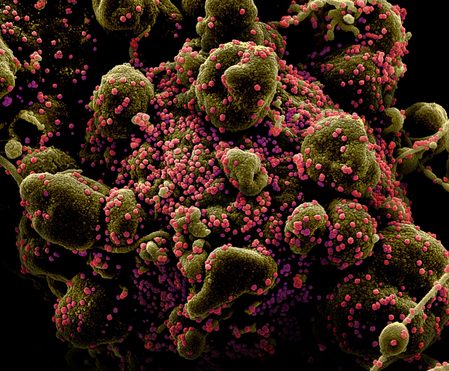
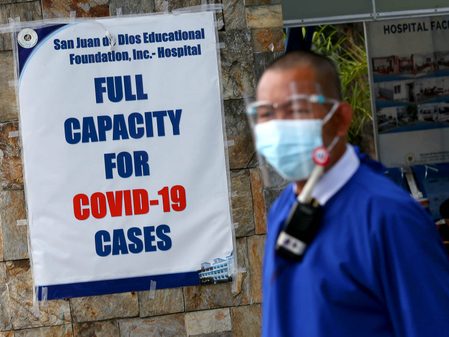

![[EDITORIAL] Contact tracing: Nasaan ang political will?](https://www.rappler.com/tachyon/2021/04/animated-contact-tracers-failed-systems-carousel.jpg?fit=449%2C449)
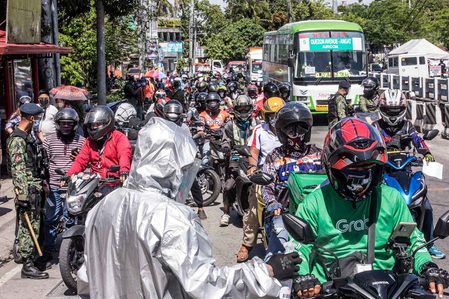

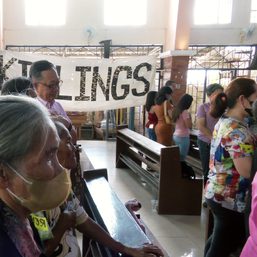

![[Just Saying] Diminished impact of SC Trillanes decision and Trillanes’ remedy](https://www.rappler.com/tachyon/2024/04/Diminished-impact-of-SC-Trillanes-decision-and-remedy.jpg?resize=257%2C257&crop=273px%2C0px%2C720px%2C720px)
![[Rappler Investigates] Son of a gun!](https://www.rappler.com/tachyon/2024/03/newsletter-duterte-quiboloy.jpg?resize=257%2C257&crop=450px%2C0px%2C1080px%2C1080px)


![[Newsstand] The Marcoses’ three-body problem](https://www.rappler.com/tachyon/2024/04/tl-marcoses-3-body-problem.jpg?resize=257%2C257&crop=451px%2C0px%2C1080px%2C1080px)
![[Edgewise] Preface to ‘A Fortunate Country,’ a social idealist novel](https://www.rappler.com/tachyon/2024/02/a-fortunate-country-february-8-2024.jpg?resize=257%2C257&crop_strategy=attention)
![[New School] When barangays lose their purpose](https://www.rappler.com/tachyon/2024/02/new-school-barangay.jpg?resize=257%2C257&crop=414px%2C0px%2C1080px%2C1080px)
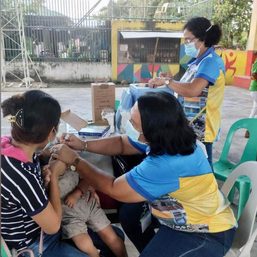
![[Free to Disagree] Sabwatan ng mga doktor at drug companies](https://www.rappler.com/tachyon/2024/04/tl-sabwatan-doktor-drug-companies-April-22-2024.jpg?resize=257%2C257&crop=292px%2C0px%2C720px%2C720px)
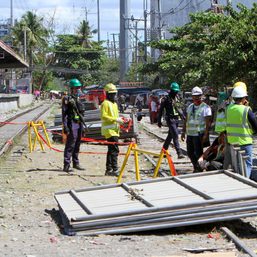

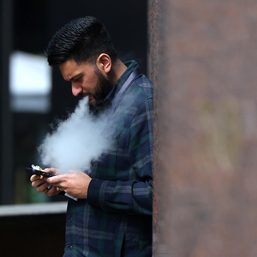
There are no comments yet. Add your comment to start the conversation.